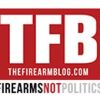This article originally appeared on The Firearm Blog.
Like a lot of technical terms in the firearms world, the ‘length of pull’ measurement is used often, but may not always be properly understood. And while the concept itself is pretty simple, I decided to consult an expert for a full explanation. Luckily for me, I already had the right guy to call in my address book.
Steve Rose is the owner/operator of Rose Action Sports in Pembroke, Kentucky. Rose is a master gunsmith who upgrades and repairs a broad spectrum of firearms for sport and competition shooters across the country. I first met Steve a few years ago when he cut a barrel, threaded it for chokes and set the front sight for a Remington 870 Short Barreled Shotgun (SBS) build I nicknamed “The Woodsman”. Steve’s craftsmanship and customer service are top-notch.
Q: Steve, what is ‘Length of Pull’?
A: Length of Pull (LOP) on the shotgun or rifle is the distance from the trigger to the back center of the butt plate or recoil pad. LOP is one of the primary measurements in determining if the gun “fits” the shooter.
Q: Why is a proper LOP so important?
A: Whether it be for hunting or competition use, a properly LOP fitted gun allows the shooter to shoulder the firearm comfortably, puts the head and eye into position for a consistent sight picture, and allows for the most efficient gun movement (“swing”) while the gun is held up in the firing position.
When the LOP is too long the gun will be difficult to mount as the stock will drag under the shooter’s arm as it is raised into position, the gun will pushed out in front of the shooter making movement (ie “swinging the gun”) more unnatural and uncomfortable. A LOP that is too long will also make a consistent sight picture difficult to achieve as the shooter’s eye and head position is too far back from the rifle scope or shotgun receiver. A LOP that is too short allows the support hand to contact the shooter’s nose or face under recoil or, in the case of a scoped rifle, the shooter’s eye may get too close to the scope leaving a “Weaver eyebrow” from a heavy recoiling gun.
Q: Is there a proper way to meaure LOP?
A: A general rule of thumb when testing a gun’s fit is that the thumb of the support hand (the hand around the wrist of the stock) should be about 1.5” from the shooters nose when the firearm is shouldered just like you are shooting it. (The old wives tale about holding the gun stock in the crook of the arm is just that, an old wives tale, and does not really tell us if the LOP matches the shooter).
We often test fit guns to the shooter by taping on temporary cardboard spacers to simulate a longer LOP or removing the factory recoil pad and/or trimming the stock length to achieve a shorter LOP. After the correct length is determined the stock can be lengthened with a thicker recoil pad and/or spacers. Slip over recoil pads that the shooter can install themselves are also available. A shortened stock will be trimmed to final length and new recoil pate or butt plate installed. In some cases the factory pad might be reused.
Q: Is there such a thing as a one-size-fits-all LOP?
A: Over the years each manufacturer has determined what they consider the typical, average LOP for their customer – but much like going into a clothing store and finding every T shirt is size LARGE you take your chances with getting a good fit if you vary much from that “average size” category. Buying a firearm without the opportunity to handle and shoulder it does leave a little to chance so if at all possible try to handle a similar model at a store, range, or from a fellow shooter. Luckily some firearms are now designed with multiple stock spacers or recoil pads included to allow the owners to achieve a more personalized fit and if not, your local gunsmith is likely well equipped to fit your new shotgun or rifle to you.
Thanks, Steve.


